Evaluation of Subsidy Programmes
This research group develops the scientific foundations for causal impact analysis of policy interventions within the European Union, with a particular focus on place-based policies. Despite significant public spending on such programmes in many developed economies, there is limited evidence on their effectiveness and efficiency.
Our approach integrates three key dimensions: first, the systematic use of administrative funding data and legislative documents; second, the application of advanced methods in policy impact evaluation; and third, the exchange of knowledge among researchers, policymakers, public administration, and civil society. Without this integration, research risks becoming either overly abstract or disconnected from the institutional and legal realities of policy implementation. By combining these elements, we create robust research designs grounded in real data and legal frameworks.
This approach allows us to generate evidence-based insights that contribute to better informed decision-making—not only in politics but also within civil society. The findings of our work have contributed to the revision and improvement of existing subsidy programmes. The research group is closely embedded in the activities of the Centre for Evidence-based Policy Advice (CEP), ensuring both scientific rigor and practical relevance. In doing so, we embody the leitmotif of the Leibniz Association: theoria cum praxi.
Research Cluster
Economic Dynamics and StabilityYour contact

- Department Centre for Evidence-based Policy Advice
EXTERNAL FUNDING
09.2019 ‐ 09.2022
Establishing Evidence-based Evaluation Methods for Subsidy Programmes in Germany (EVA-KULT)
The project aims at expanding the Centre for Evidence-based Policy Advice at the Halle Institute for Economic Research (IWH-CEP).
01.2018 ‐ 12.2020
Networked growth - Innovative Saxony-Anhalt through digital business models (Competence Center 4.0)
01.2017 ‐ 12.2018
Political Participation in Eastern Germany
12.2015 ‐ 11.2018
Socio-economic Effects of Research on Innovative Approaches for POC Diagnostics
Part of the EXASENS project. Coordinated by the Leibniz Institute of Photonic Technology (IPHT) in Jena, nine Leibniz institutes are working together on researching point-of-care (POC) technology for the prediction and diagnosis of chronic inflammatory respiratory diseases. See press release.
02.2017 ‐ 02.2018
The Importance of Non-University Research Institutions for the Development of Firms and Regions (Be_For_Reg-Projekt)
01.2015 ‐ 12.2016
Evaluation of the "Joint Task 'Improving the Regional Economic Structure'" in the Federal State of Saxony-Anhalt
Refereed Publications
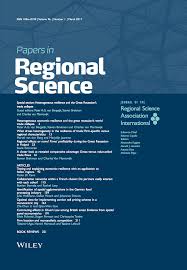
Identifying Industrial Clusters from a Multidimensional Perspective: Methodical Aspects with an Application to Germany
in: Papers in Regional Science, No. 2, 2011
Abstract
If regional development agencies assume the cluster concept to be an adequate framework to promote regional growth and competitiveness, it is necessary to identify industrial clusters in a comprehensive manner. Previous studies used a diversity of methods to identify the predominant concentrations of economic activity in one industrial sector in a region. This paper is based on a multidimensional approach developed by Titze et al. With the help of the combination of concentration measures and input–output methods they were able to identify horizontal and vertical dimensions of industrial clusters. This paper aims to refine this approach by using a superior measure of spatial concentration and by integrating information about spatial interdependence of industrial cluster structures to contribute to a more adequate framework for industrial cluster identification.

“Geschäftsmodell Deutschland“ und außenwirtschaftliche Ungleichgewichte in der EU
in: List Forum für Wirtschafts- und Finanzpolitik, 2010
Abstract
Die vergangenen Jahrzehnte waren weltweit durch eine Zunahme der außenwirtschaftlichen Ungleichgewichte gekennzeichnet. Den Leistungsbilanzüberschussländern, insbesondere Deutschland, wird in diesem Zusammenhang zunehmend vorgeworfen, durch zu moderate Lohnsteigerungen wesentlich zum Aufbau der Ungleichgewichte beigetragen zu haben. Vor diesem Hintergrund werden im vorliegenden Beitrag auf Basis einer Paneldatenanalyse die Determinanten der Leistungsbilanzungleichgewichte in der Europäischen Union ermittelt. Die Ergebnisse zeigen, dass die internationale preisliche Wettbewerbsfähigkeit der Länder nur eine von vielen erklärenden Variablen darstellt. Vielmehr gehen die Ungleichgewichte wesentlich auf unterschiedliche Sparneigungen, sowohl der öffentlichen Hand als auch des privaten Sektors, zurück. Folglich wären die an Deutschland gerichteten Forderungen, zum Abbau der Ungleichgewichte die moderate Lohnpolitik zu beenden, allein nicht zielführend. Stattdessen müssen andere Wege gefunden werden, die Binnennachfrage in den Leistungsbilanzüberschussländern zu stärken und die Ausschöpfung bestehender Sparpotenziale in den Leistungsbilanzdefizitländern zu erhöhen.

Die Identifikation horizontaler und vertikaler industrieller Clusterstrukturen in Deutschland – Ein neues Verfahren und erste empirische Ergebnisse
in: Raumforschung und Raumordnung, No. 5, /6 2009
Abstract
Folgt man der Überlegung, dass das Clusterkonzept für die regionale Wirtschaftspolitik Ansatzpunkte bildet, um Wirtschaftswachstum sowie Wettbewerbsfähigkeit von Regionen zu fördern, so setzt dies voraus, industrielle Cluster umfassend zu identifizieren. Bisherige Untersuchungen bedienen sich dazu einer methodischen Vielfalt, ausgehend von spezifischen regionalen Fallstudien über Input-Output-Methoden hin zu verschiedenen Konzentrationsmaßen. Der vorliegende Beitrag verwendet ein für die empirische Clusterforschung neues Instrument – die Qualitative Input-Output-Analyse. Ihr wohnt nach Ansicht der Autoren die Möglichkeit inne, in Verbindung mit Konzentrationsmaßen einen Beitrag zur flächendeckenden Identifikation industrieller Cluster zu liefern. Insbesondere erlaubt die vorgestellte Methodik die Zusammenführung des Tatbestandes einer kritischen Masse von Unternehmen mit dem Merkmal der Interaktion dieser über Input-Output-Beziehungen auch auf größeren regionalen Untersuchungsebenen. Wendet man die Methodik auf die deutschen Arbeitsmarktregionen an, so wird ersichtlich, dass 103 von 270 Arbeitsmarktregionen über Ansätze horizontaler Cluster verfügen, weitere 28 Regionen beherbergen vertikale industrielle Cluster. 139 Arbeitsmarktregionen weisen gemäß dem gewählten Untersuchungsdesign weder horizontale noch vertikale Cluster auf.

Investitionszuschüsse nur bei Schaffung von Arbeitsplätzen? Schlussfolgerungen aus der Förderung eines Investitionsprojektes über die Gemeinschaftsaufgabe im Land Brandenburg
in: Zeitschrift für Wirtschaftspolitik, 2009
Abstract
Zu den wichtigsten Instrumenten der Regionalpolitik gehört der Investitionszuschuss im Rahmen der Gemeinschaftsaufgabe “Verbesserung der regionalen Wirtschaftsstruktur“. Dieses Instrument kommt in strukturschwachen Regionen zum Einsatz, deren vorrangiges Ziel der Abbau der Arbeitslosigkeit ist. Der institutionelle Rahmen sieht vor, die Zuschüsse an die Schaffung bzw. Sicherung zusätzlicher Dauerarbeitsplätze zu binden. Der vorliegende Beitrag zeigt, dass diese Bindungspflicht unter bestimmten Umständen ineffiziente Produktionsstrukturen provozieren kann. Die Ursachen hierfür liegen in Marktmängeln sowie im Politikversagen. Für eine Landesregierung besteht der Anreiz, eine möglichst große Zahl zusätzlicher Dauerarbeitsplätze zu fordern, da die Landeseinnahmen durch die Beschäftigungs- und Produktionseffekte die Ausgaben der Förderung in relativ kurzer Zeit ausgleichen können. Dazu trägt auch der deutsche Länderfinanzausgleich bei, da die Ausgaben für die Förderung durch Ausgleichszahlungen der anderen Länder kompensiert werden können.

“Absurdes Ergebnis“ oder wissenschaftlich fundiert? Die Wahl der Konsolidierungsländer
in: List Forum für Wirtschafts- und Finanzpolitik, No. 2, 2009
Abstract
Im Sommer 2009 wurde von Bundestag und Bundesrat die Einführung der Schuldenbremse beschlossen. Im Rahmen der damit verbundenen Regelungen wurde zudem entschieden, den fünf am höchsten verschuldeten Bundesländern im Zeitraum von 2011 bis 2019 so genannte Konsolidierungshilfen zum Abbau ihrer strukturellen Verschuldung zu gewähren. Fragen nach der Auswahl der ‚Konsolidierungsländer‘, den verwendeten finanzwissenschaftlichen Indikatoren und deren Realitätsnähe hinsichtlich der tatsächlichen finanziellen Situation der Länderhaushalte blieben bisher allerdings unbeantwortet. Der vorliegende Beitrag setzt an diesem Punkt an und zeigt, dass die Wahl der ‚Konsolidierungsländer‘ ein politischer Kompromiss zwischen Bund und Ländern war, der zum Teil finanzwissenschaftlich gestützt werden kann. Der Vergleich einzelner finanzstatistischer Kennzahlen deutet zusätzlich darauf hin, dass die finanzpolitischen Handlungsspielräume der Länder jedoch nicht allein von der Höhe des Schuldenstandes und den daraus resultierenden Zinsverpflichtungen sondern auch von der Wirtschaftsleistung eines Landes abhängen. Die Konsolidierungshilfen sind somit eine Hilfe zum Abbau der bestehenden strukturellen Schulden, aber keine Garantie dafür, dass die Länder über das Jahr 2019 hinaus die engen Grenzen der bundesdeutschen Schuldenbremse einhalten werden können.
Working Papers
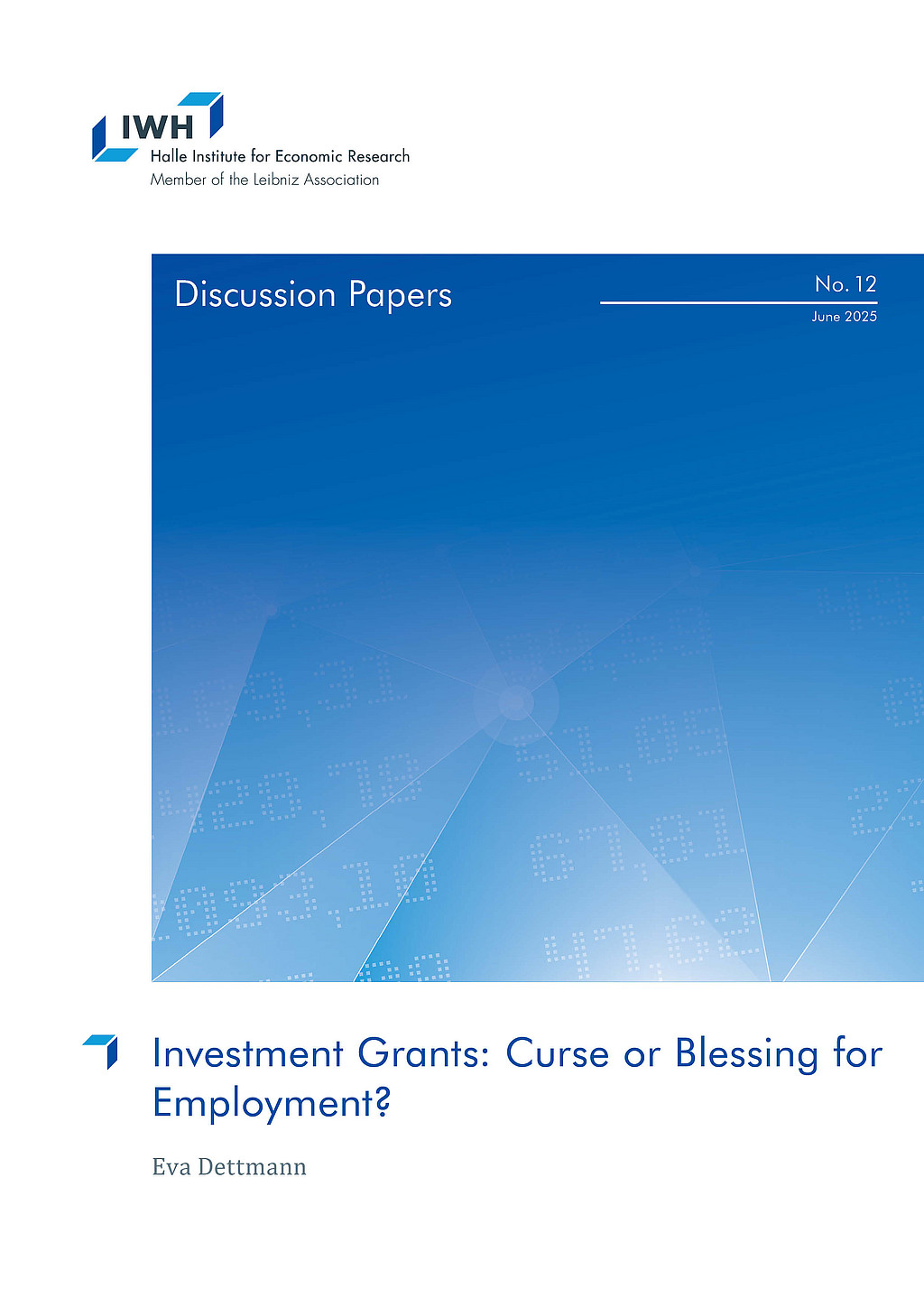
Investment Grants: Curse or Blessing for Employment?
in: IWH Discussion Papers, No. 12, 2025
Abstract
<p>In this study, establishment-level employment effects of investment grants in Germany are estimated. In addition to the quantitative effects, I provide empirical evidence of funding effects on different aspects of employment quality (earnings, qualifications, and job security) for the period 2004 to 2020. The database combines project-level treatment data, establishment-level information on firm characteristics and employee structure, and regional information at the district-level. For the estimations, I combine the difference-in-differences approach of Callaway and Sant’Anna (2021) with ties matching at the cohort level. The estimations yield positive effects on the number of employees, but point to contradicting effects of investment grants on different aspects of employment quality.</p>
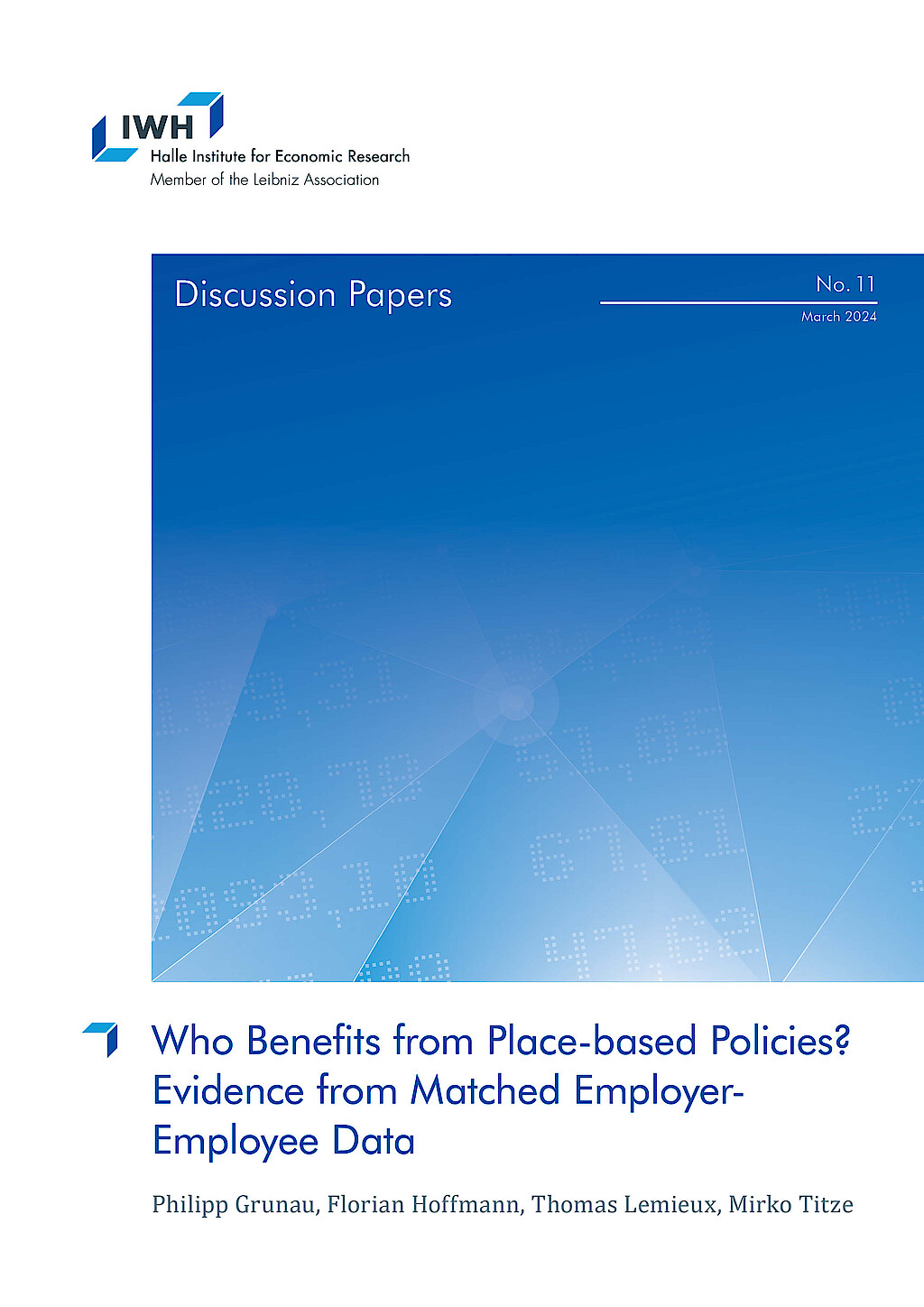
Who Benefits from Place-based Policies? Evidence from Matched Employer-Employee Data
in: IWH Discussion Papers, No. 11, 2024
Abstract
<p>We study the granular wage and employment effects of a German place-based policy using a research design that leverages conditionally exogenous EU-wide rules governing program parameters at the regional level. The place-based program subsidizes investments to create jobs with a subsidy rate that varies across labor market regions. The analysis uses matched data on the universe of establishments and their employees, establishment-level panel data on program participation, and regional scores that generate spatial discontinuities in program eligibility and generosity. Spatial spillovers of the program linked to changing commuting patterns can be assessed using information on place of work and place of residence, a unique feature of the data. These rich data enable us to study the incidence of the place-based program on different groups of individuals. We find that the program helps establishments create jobs that disproportionately benefit younger and less-educated workers. Funded establishments increase their wages but, unlike employment, wage gains do not persist in the long run. Employment effects estimated at the local area level are slightly larger than establishment- level estimates, suggesting limited economic spillover effects. On the other hand, spatial spillovers are large as over half of the employment increase comes from commuters. Using subsidy rates as an instrumental variable for actual subsidies indicates that it costs approximately EUR 25,000 to create a new job in the economically disadvantaged areas targeted by the program.</p>
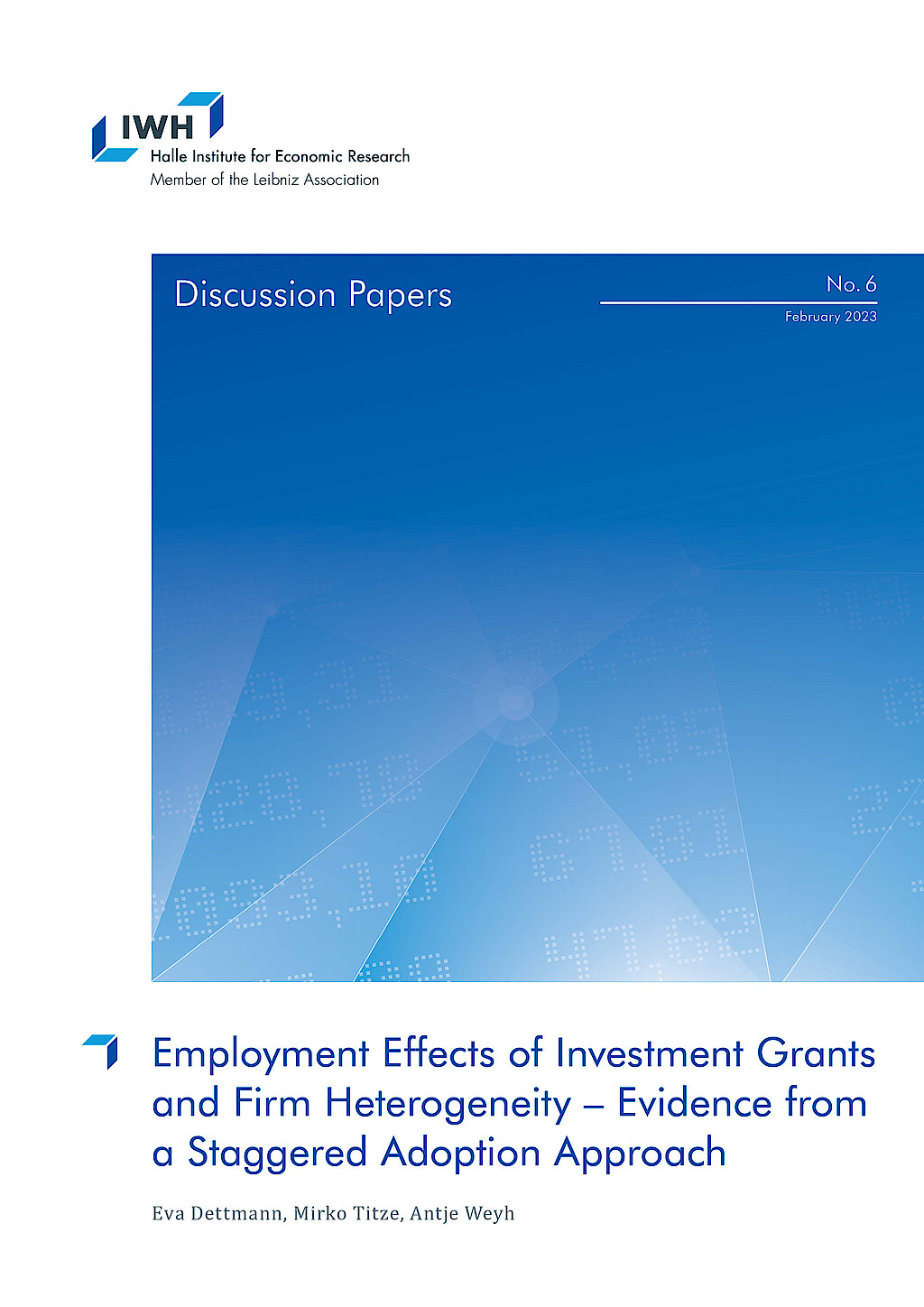
Employment Effects of Investment Grants and Firm Heterogeneity – Evidence from a Staggered Adoption Approach
in: IWH Discussion Papers, No. 6, 2023
Abstract
<p>This study estimates the firm-level employment effects of investment grants in Germany. In addition to the average treatment effect on the treated, we examine discrimination in the funding rules as potential source of effect heterogeneity. We combine a staggered difference-in-differences approach that explicitly models variations in treatment timing with a matching procedure at the cohort level. The findings reveal a positive effect of investment grants on employment development in the full sample. The subsample analysis yields strong evidence for heterogeneous effects based on firm characteristics and the economic environment. This can help to improve the future design of the program.</p>
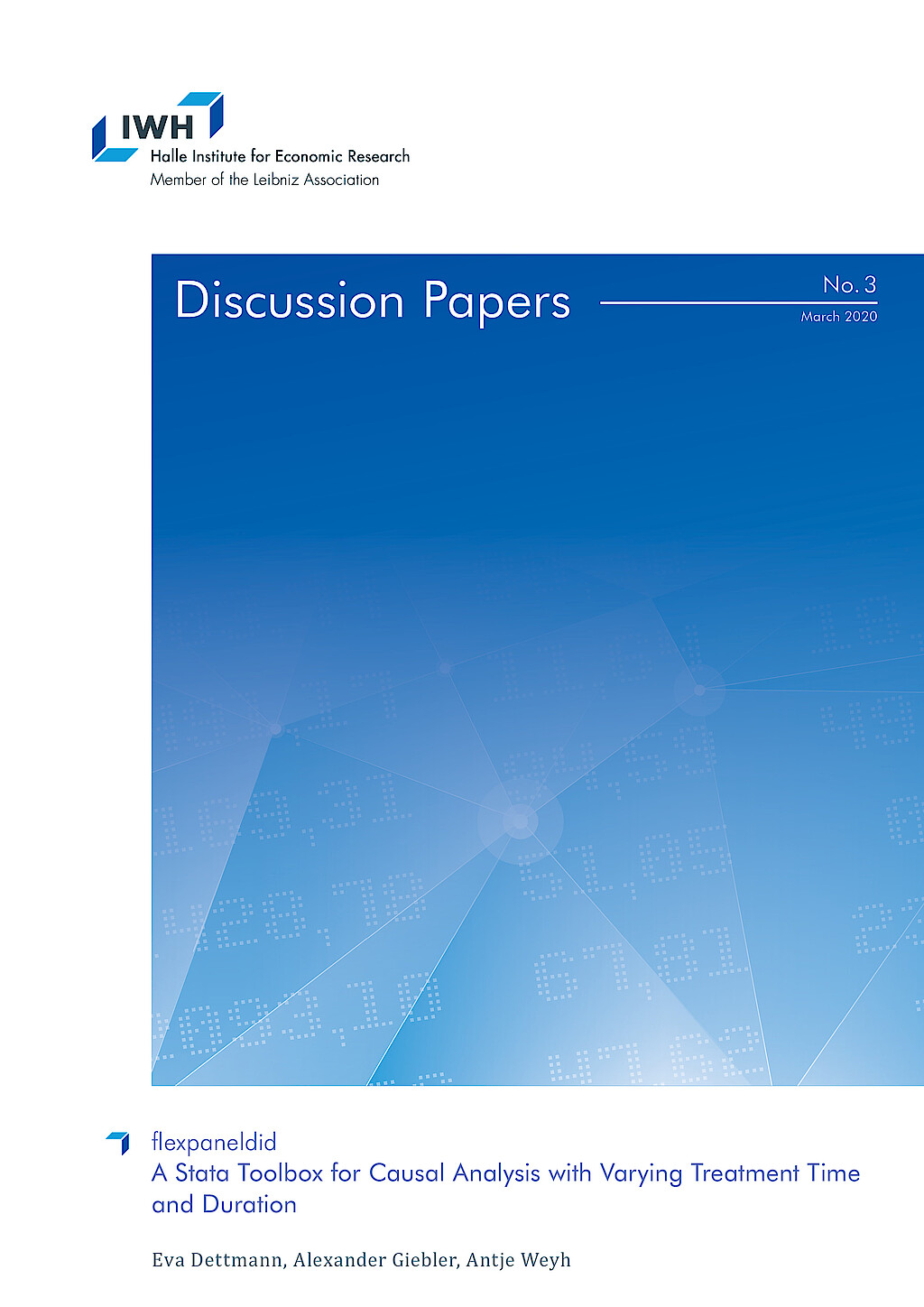
flexpaneldid: A Stata Toolbox for Causal Analysis with Varying Treatment Time and Duration
in: IWH Discussion Papers, No. 3, 2020
Abstract
The paper presents a modification of the matching and difference-in-differences approach of Heckman et al. (1998) for the staggered treatment adoption design and a Stata tool that implements the approach. This flexible conditional difference-in-differences approach is particularly useful for causal analysis of treatments with varying start dates and varying treatment durations. Introducing more flexibility enables the user to consider individual treatment periods for the treated observations and thus circumventing problems arising in canonical difference-in-differences approaches. The open-source flexpaneldid toolbox for Stata implements the developed approach and allows comprehensive robustness checks and quality tests. The core of the paper gives comprehensive examples to explain the use of the commands and its options on the basis of a publicly accessible data set.
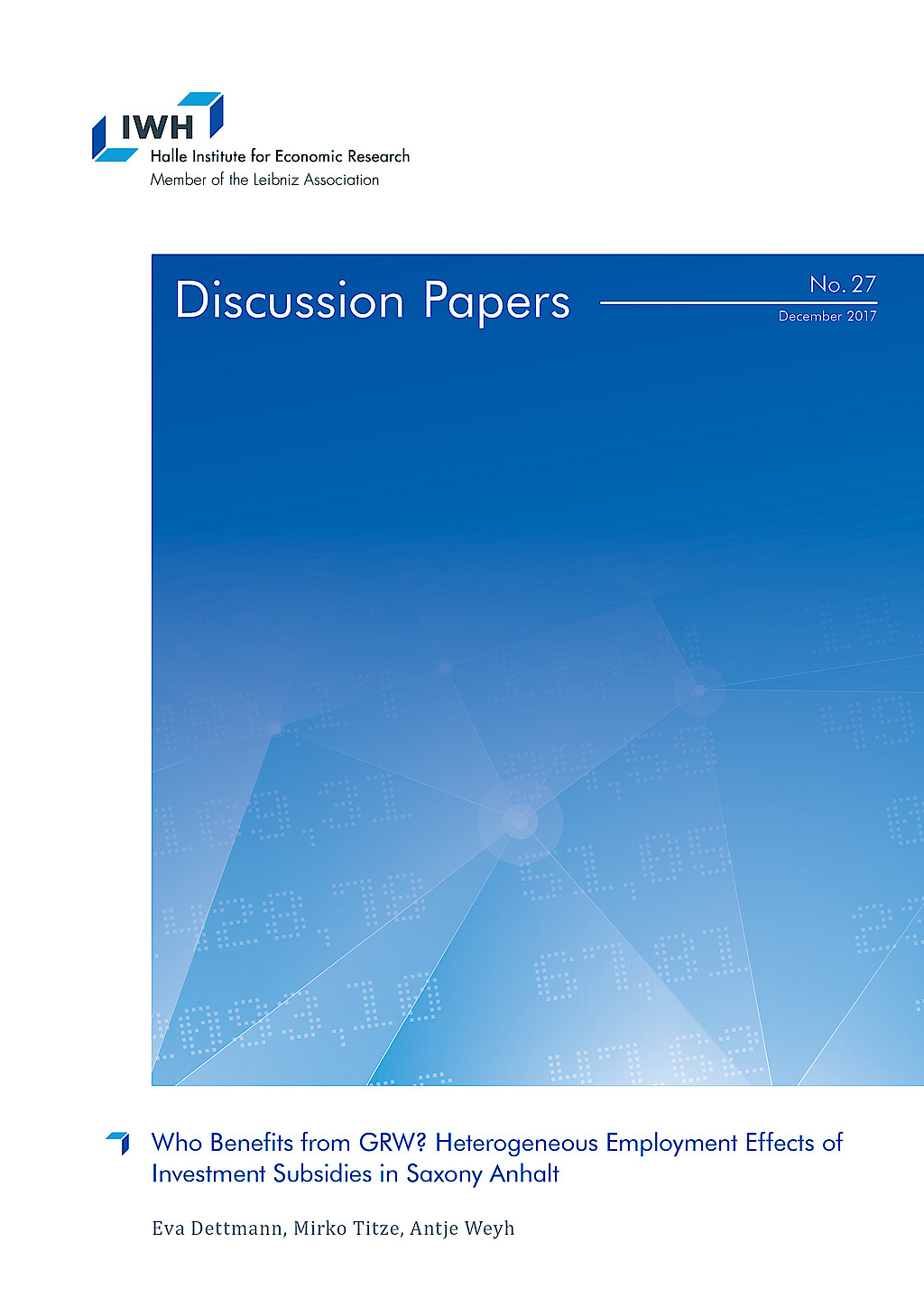
Who Benefits from GRW? Heterogeneous Employment Effects of Investment Subsidies in Saxony Anhalt
in: IWH Discussion Papers, No. 27, 2017
Abstract
The paper estimates the plant level employment effects of investment subsidies in one of the most strongly subsidized German Federal States. We analyze the treated plants as a whole, as well as the influence of heterogeneity in plant characteristics and the economic environment. Modifying the standard matching and difference-in-difference approach, we develop a new procedure that is particularly useful for the evaluation of funding programs with individual treatment phases within the funding period. Our data base combines treatment, employment and regional information from different sources. So, we can relate the absolute effects to the amount of the subsidy paid. The results suggest that investment subsidies have a positive influence on the employment development in absolute and standardized figures – with considerable effect heterogeneity.













